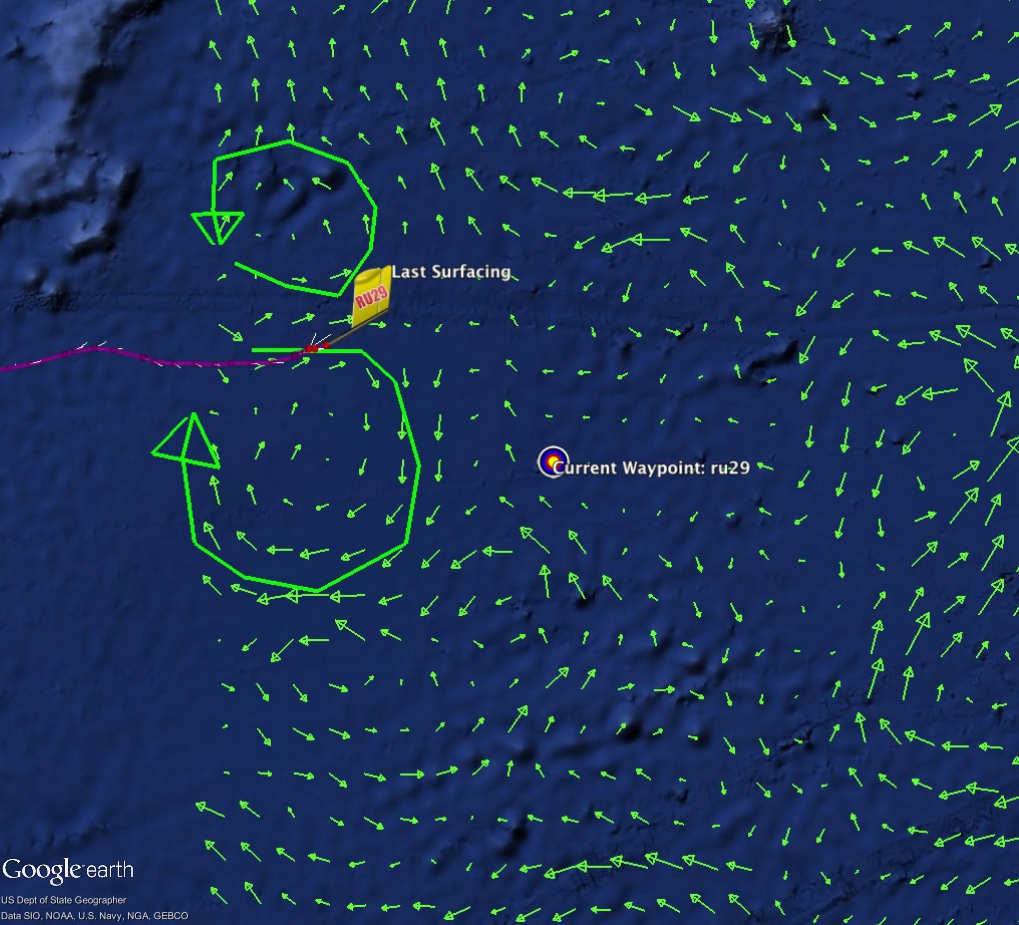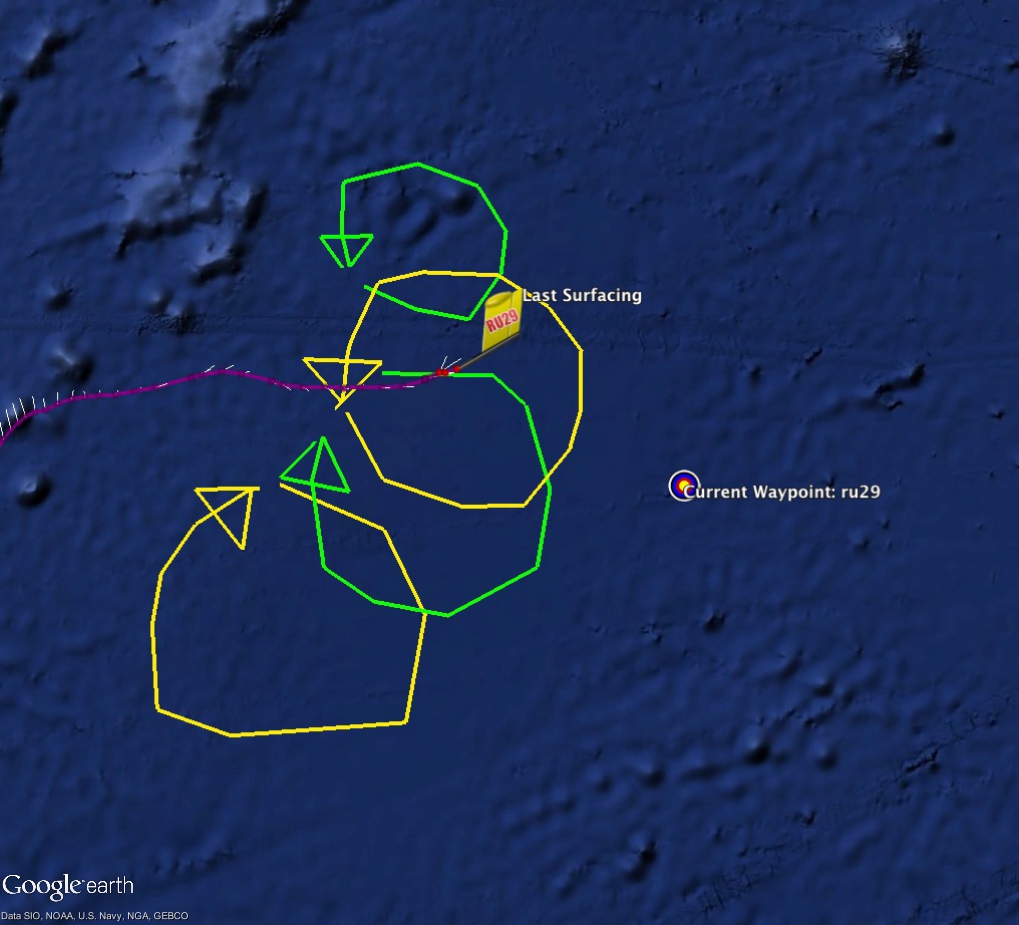Since Monday, Challenger has been fighting her way through where we thought there would be a strong warm core eddy, however the currents have been predominantly due east with not as much southern component as the european model suggested.
The currents reported by the glider seem to follow the model output from RTOFS more closely, showing that the path we took followed the flow between a cold core ring to the south and a warm core ring to the north:
Comparing the two models, it almost seems like relative to RTOFS, copernicus is shifted to the south. The jet 29 took by being pushed due east looks like it could be the same jet we wanted to take to the south in the copernicus model output
Outside of piloting, on Thursday at around 4am eastern time, Challenger succumbed to an underwater reset. This has happened a few times in the past, but what happened was that while in mid flight, the computer will reset causing the glider to come to the surface unaware of what program it had been previously running.
This resulted in the glider drifting at the surface for a while until someone was able to grab a hold of it and get it back on its way.
Finally today we had nice finding in which the direction of the glider velocity and the current velocity are in exact agreement at exactly 90 degrees. In order to make 90˚, the waypoint had to be set at an angle of 103˚ which means the glider is pulling to the left at 13˚. We also believe that this heading offset depends on the direction we are flying,
meaning it may have to do with the compass, and the idea that we are in an area where the horizontal component of the earths magnetic field is at a minimum. This test is exactly east, and almost anything we fly over the next couple of months will be mostly east.
Using this, we will continue to monitor the offset in our steering through the weekend
Force Wind Sea & Honor


